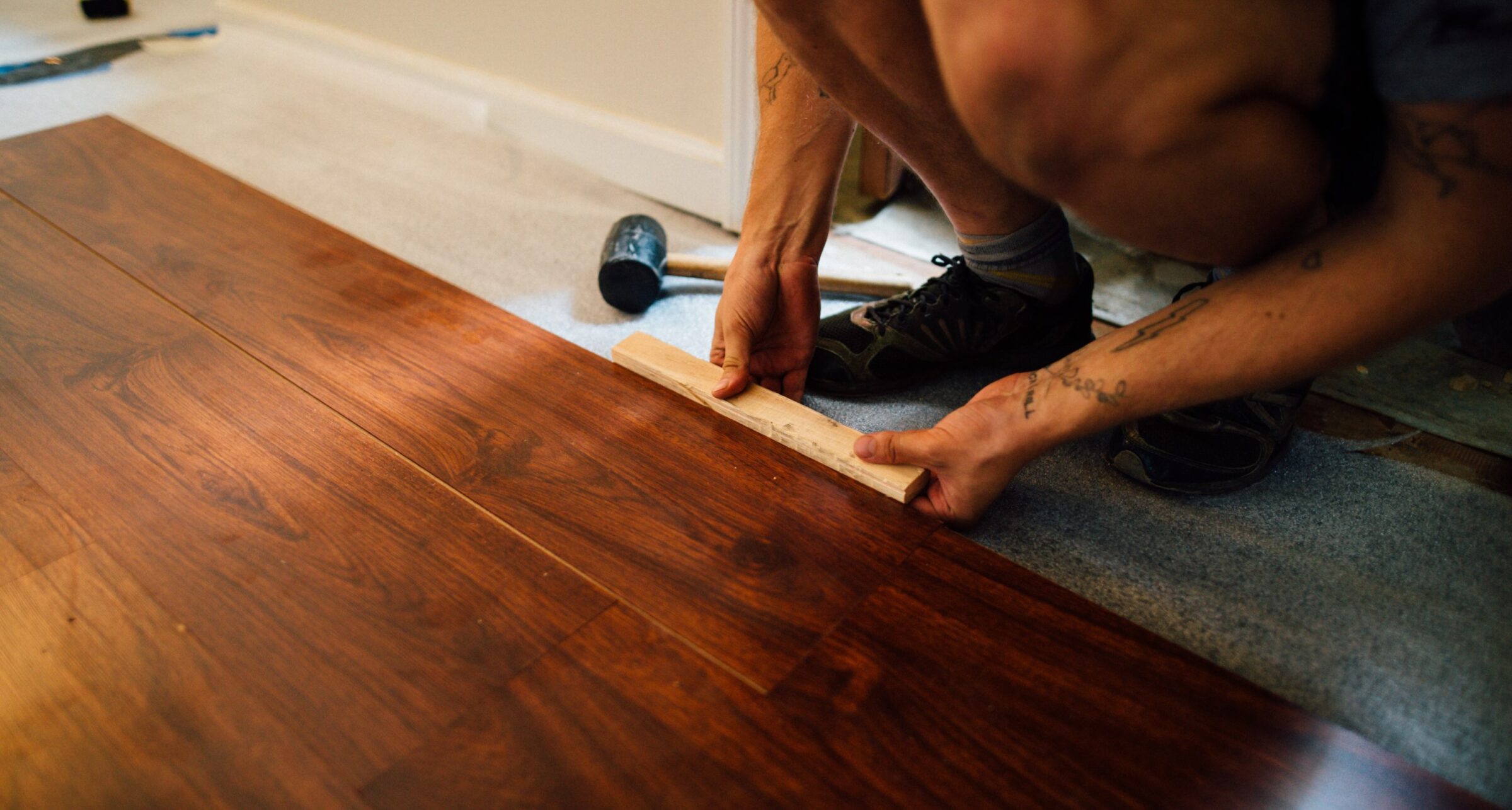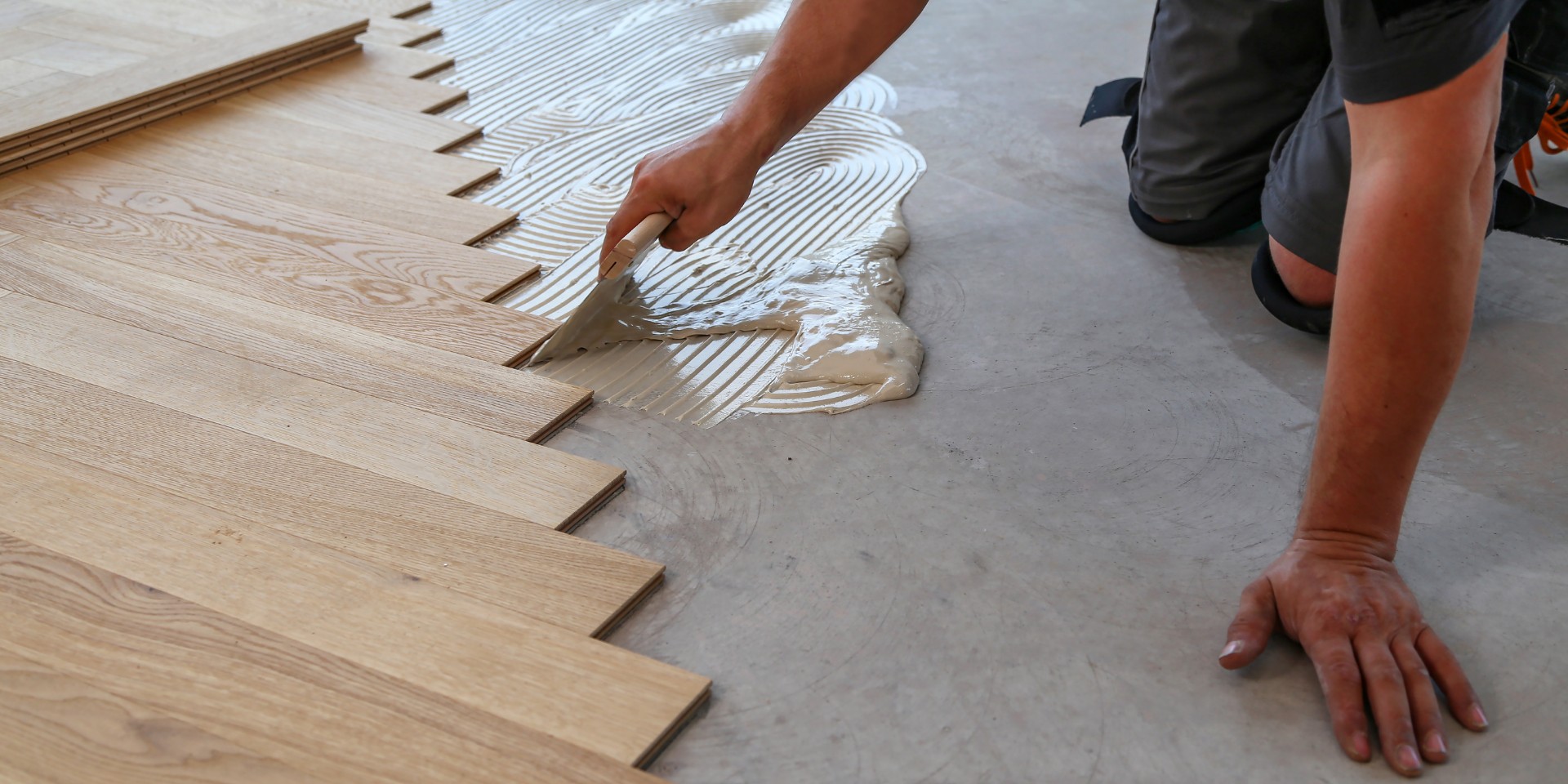Engineered timber flooring has rapidly gained popularity as an elegant, sustainable, and versatile choice for flooring. Its blend of natural beauty and durability makes it a sought-after option for both residential and commercial spaces. The key to ensuring a flawless and lasting installation lies in selecting high-quality engineered timber, such as our MarcKenzo range, and also using the right installation method, trims, and accessories. In this article, we’ll delve into the two most common installation techniques for engineered timber flooring and explore the range of trims and accessories that can elevate your flooring project.
Engineered Timber Flooring Installation Methods
Glue-Down Installation
Glue-down installation involves adhering the engineered timber floorboards directly to the subfloor using a specialised adhesive. This method provides a more stable and solid feel underfoot, making it suitable for areas with heavy foot traffic. It also eliminates the hollow sound that can sometimes occur with floating installations.
To execute a glue-down installation:
- Prep the subfloor meticulously, ensuring it’s clean, level, and free of moisture. Levelling is often required during the preparation stage of the subfloor.
- Apply the recommended adhesive using a trowel, spreading it evenly over the subfloor.
- Place the floorboards carefully onto the adhesive, applying even pressure to ensure proper bonding.
- Wipe away any excess adhesive that may have seeped between the floorboards.
- With the glue-down installation method, the floor cannot be walked on or have furniture placed on it for 24 hours. This gives time for the glue to set.
Floating Installation
Floating installation is also a common method for installing engineered timber flooring. It involves laying the floorboards over an underlay, without directly attaching them to the subfloor. This method is ideal for installations over various subfloor types, such as concrete or timber, and it offers the advantage of easy removal and replacement. A thin foam or rubber underlay is usually used to provide cushioning and sound insulation.
To perform a floating installation:
- Begin by preparing the subfloor, ensuring it’s clean, level, and dry. Levelling is also often required during the preparation stage of the subfloor for a floating installation.
- Lay down the underlay to create a moisture barrier and reduce noise.
- Start installing the floorboards by clicking or locking them together using the manufacturer’s recommended locking system.
- Leave a small gap around the perimeter to accommodate expansion.
Trims and Accessories
Skirting Boards:
Skirting boards are essential for finishing the gap between the bottom of the wall and the floor. They protect the walls from damage, hide expansion gaps, and add a polished look to the room. Skirting boards come in various styles and materials, allowing you to choose a design that complements your interior.
Transition Strips:
Transition strips are used to create smooth transitions between different types of flooring materials or between rooms. For instance, they can bridge the gap between engineered timber flooring and tiles or carpet. Transition strips come in different profiles, including T-shaped, reducer, and threshold, ensuring a seamless and safe connection.
Stair Nosing:
When your engineered timber flooring extends to staircases, stair nosing is crucial for both aesthetics and safety. Stair nosing provides a finished edge to each step, prevents wear and tear, and reduces the risk of slips and falls. It’s available in various profiles and materials to match your flooring and style.
Underlay:
Underlay is not only important for sound insulation but also for ensuring a smooth surface and proper moisture protection. They create a barrier between the subfloor and the engineered timber, enhancing the longevity of your flooring. Choose underlay with moisture resistance properties to prevent moisture-related issues.
The professional installation of engineered timber flooring is an art that combines precision, knowledge, and attention to detail. Whether you opt the floating or glue-down method, ensuring proper installation is crucial for both the appearance and longevity of your flooring. Additionally, selecting the right trims and accessories can take your flooring project to the next level, providing a polished and cohesive look while addressing practical considerations.
Before embarking on an engineered timber flooring installation journey, it’s advisable to consult with professionals to gain insights into the best practices for your specific project. With the right techniques and finishing touches, your engineered timber flooring will not only enhance the aesthetics of your space but also stand the test of time.
If you have a current building or renovation project that includes new flooring, feel free to reach out to us. We would love to discuss your flooring options. Contact us – Here

